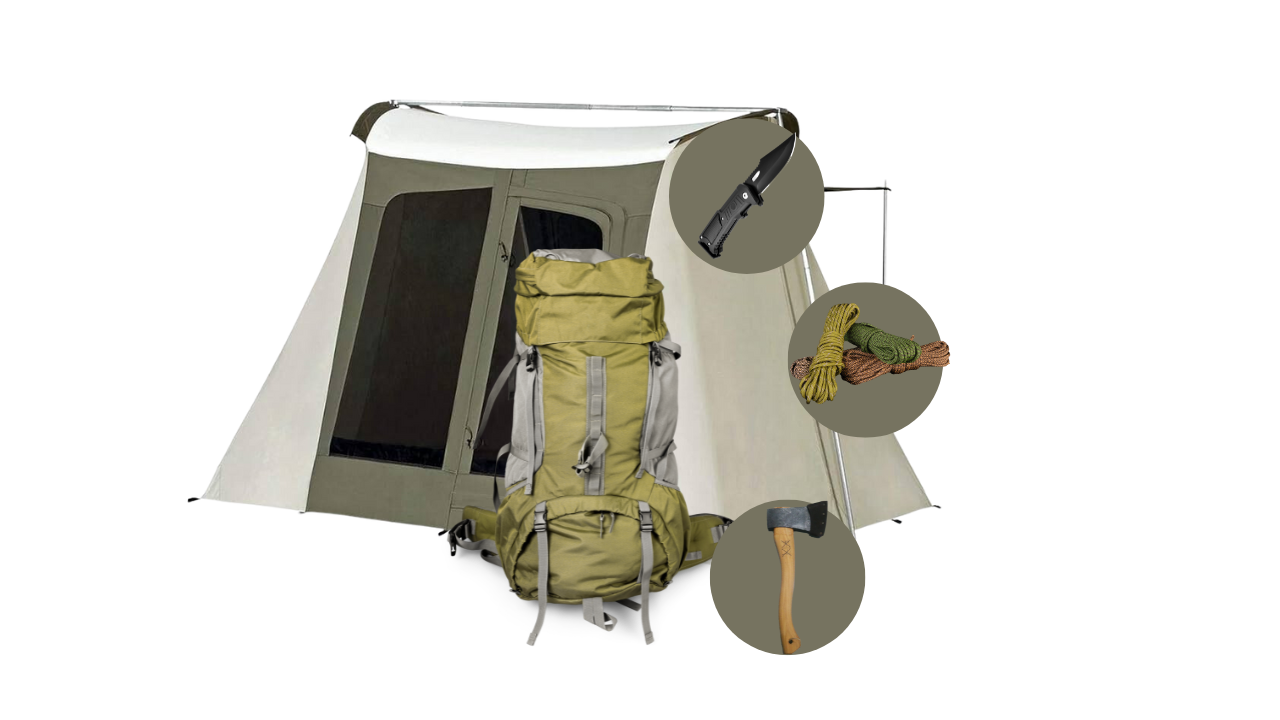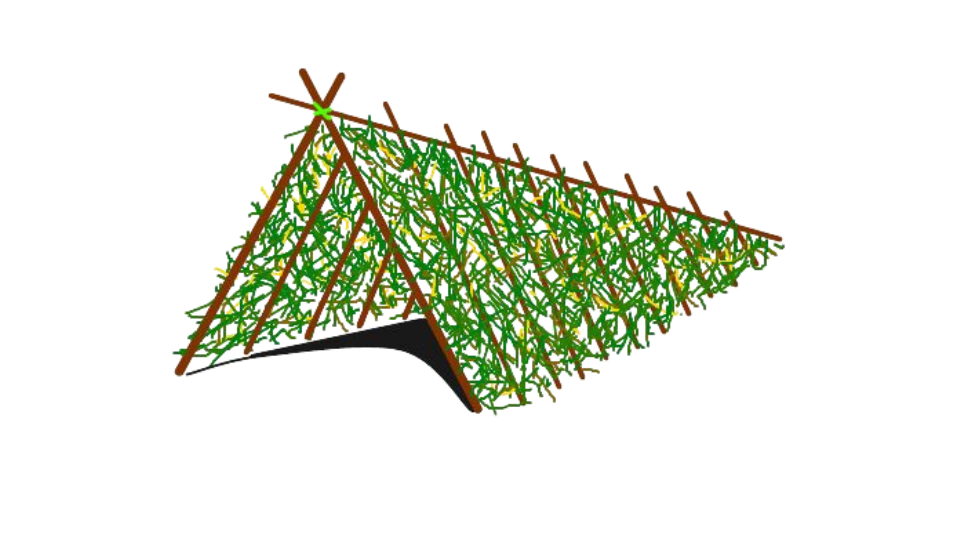Your Cart is Empty
Call, Text or Chat Mon-Friday 10AM-5PM CST : 1-844-WILDOAK
Menu
-
- Deals & Promos
- Homesteading
- Living Off The Grid
- Off Grid Toilet
- Composting Toilets
- Incinerating Toilet
- Chicken Coops
- Greenhouses
- DIY Shed Kits
- Barndominium Kit
- Garage Kits
- Poultry Processing
- Dog Kennels
- BeeKeeping
- EMP & Signal Protection
- Emergency Food Kits
- Freeze Dryers
- Solar Generators, Panels and Batteries
- Solar Fridge & Freezers
- Propane Wall Heater
- Water Filtration
- Coolers and Cooking
- Gazebos
- Portable Sauna
- Camping Cot
- Hunting Blind
- Canvas Tents
- Prepping
- Overlanding Gear
- Composting Toilets
- Solar Generators
- Brands
- Chicken Coop Brands
- Composting Toilet Brands
- Solar Brands
- Food Storage Brands
- Freeze Dryer Brands
- Water Filtration Brands
- Incinerating Toilet
- Dry Flush Toilet Brands
- Waterless Toilet Brands
- Heater Brands
- EMP Shield Brands
- Tent Brands
- Cot Brands
- Cooler Brands
- Stove & Grill Brands
- Dog Kennels
- Greenhouse & Gazebo Brands
- Portable Saunas
- DIY Shed Kits
- About Us
- Resource Center
- The Ultimate Prepper & Emergency Survival Blog - Includes Free eBook
- Beginners Guide to Living off The Grid - Includes Free eBook
- Building Your Own Emergency Food Supply
- Best Survival Food to Be Prepared for Anything
- Berkey Lab Tests & Certifications
- Federal Solar Tax Credit - What You Need to Know
- BLOG
-
- 1-844-945-3625
- Login

Call, Text or Chat Mon-Friday 10AM-5PM CST : 1-844-WILDOAK
How to Make a Bushcraft Shelter: Staying Warm and Dry in the Wild
by Patricia Turla 10 min read
Ever felt the cold creeping in as you huddle under a makeshift shelter, hoping the heavy rain stops soon? With “How to Make a Bushcraft Shelter: Staying Warm and Dry in the Wild,” those worries become a thing of the past. Dive into this guide and discover the secrets to staying warm, dry, and safe, no matter what the wilderness throws your way.
Key Takeaways
- Mastering the construction of bushcraft shelters can be a life-saving skill, with essential tools including an axe, knife, paracord, and tarp.
- Selecting the right location for your shelter is crucial—avoid hazards like dead trees and animal tracks, and consider elevation and wind direction for optimal comfort and safety.
- Different types of bushcraft shelters, such as tarp shelters, lean-to shelters, and A-frame shelters, offer unique advantages depending on the situation—knowing which type to build is essential for effective survival.
Table of Contents
- Essential Tools for Bushcraft Shelters
- Choosing the Perfect Location
- Types of Bushcraft Shelters
- Building a Debris Hut
- Waterproofing and Windproofing Your Shelter
- Creating a Comfortable Sleeping Area
- Fire Safety and Heating
- Improving Your Shelter
- Common Mistakes to Avoid
- Test and Practice
- Frequently Asked Questions
- Summary
Essential Tools for Bushcraft Shelters
Having a tent in your bug-out bag is always a good idea because it offers a quick and firm wilderness survival shelter. However, if you find yourself without your tent, knowing how to build a bushcraft shelter ensures that you can still stay safe and dry.
Being able to use the materials around you to create a bushcraft shelter can provide immediate protection from the elements, which is necessary for avoiding hypothermia, heatstroke, and other weather-related dangers.
The essential tools recommended for making a bushcraft shelter include an axe, knife, paracord, and tarp.

Axe
You can’t deny the value of an axe in processing wood swiftly and efficiently. It allows you to chop down trees, split logs, and create the structural elements needed for a sturdy shelter. Additionally, an axe or hatchet with a hammer poll can drive stakes into the ground, adding versatility to your shelter-building toolkit.
Trying to cut through thick branches or split logs with a small knife—it would take ages and wear you out. Having an axe is a necessary time and energy saver in survival situations. Besides that, it is useful for creating larger piles of wood to keep your fire going through the night, ensuring you stay warm and protected.

Knife
Without a doubt, the most versatile tool in your bushcraft toolkit is a knife. Essential for activities such as:
- Cutting and shaping various materials needed for constructing a survival shelter
- Carving notches in wood for joints
- Slicing through thick ropes or vines
Think about the precision required to make fine adjustments to your shelter—trimming branches, cutting cordage, or fashioning pegs. A knife allows you to perform these tasks with ease in any wilderness survival situation.

Paracord
Paracord is a tool for tying and securing various shelter components, such as tarps, branches, and other materials. Additionally, it can be used to make makeshift clotheslines, repair gear, or even serve as a fishing line in emergencies.
Since paracord is lightweight, it ensures it won’t add weight to your pack. In survival situations, having a paracord on hand enhances your ability to quickly and efficiently build a safe and sturdy shelter.

Choosing the Perfect Location
You want a spot close to resources but not so close that it risks flooding or other hazards. Consider the following when picking a location:
Avoiding Hazards
While selecting a location, inspect the surrounding trees for dead limbs that could fall on your shelter during strong winds. Steer clear of setting up your shelter beneath dead trees, fallen trees, or frail branches. Also, investigate the area for animal tracks and bug activity to ensure you’re not setting up in a wildlife hotspot.
Large rocks should be examined for potential wildlife like scorpions or snakes before using them as windbreaks or buildings near them. By carefully selecting your site, you can avoid these hazards and ensure a safer, more comfortable shelter.

Elevation and Slope
Aim for higher ground when building your shelter to evade flood zones and secure better drainage. Flat or slightly elevated areas are ideal as they prevent water accumulation and provide good drainage.
Avoid setting up your shelter in valleys or low-lying areas where cold air tends to settle, and cold wind can make the conditions worse, especially when water runs down during rain.

Wind Direction
Evaluating the wind direction protects your shelter from chilly winds and for the strategic placement of your fire. Position the shelter opening away from the prevailing wind direction to minimize drafts and reduce wind exposure. Doing so also helps keep smoke from a fire outside and prevents it from filling your shelter.
Avoid setting up your shelter on top of a bare hill, as it might be exposed to strong winds. By positioning your shelter correctly, you can create a more comfortable and protected living space, taking advantage of the natural features that lie beneath.

Types of Bushcraft Shelters
Various situations necessitate the use of different shelters, such as:
Tarp Shelter
A military poncho or tarpaulin can serve as a ready-made survival shelter, offering an instant solution using reinforced grommets for tie-downs or stakes. To set up a tarp shelter, tie a line between two trees and stretch the tarp over the line. Place large rocks or logs on the ends of the tarp to hold it in place.
For added protection, consider a wedge tarp shelter design or even wrapping the tarp around yourself like a burrito. The flexibility of tarp shelters makes them ideal for various environments and conditions, from the forest floor to snow caves.

Lean-to Shelter
Constructing a lean-to involves leaning fallen limbs against an object to create a wall, then covering them with leaves, boughs, pine needles, bark, or forest debris. The size of a lean-to should be no bigger than necessary to fit the occupants, as larger spaces are harder to keep warm. Setting a fire on the open side of a lean-to can add much-needed heat to the shelter, making it a cozy survival shelter.

A-Frame Shelter
An A-frame shelter is shaped like a tent with smaller sticks on either side of a horizontal branch. To make it, you will need two sticks that are four or five feet long and one stick that is 10 to 12 feet long. Prop the two shorter sticks up in the shape of the letter A, and prop the longer sticks up at the top of the A, tying them together where they meet.

Building a Debris Hut
Designed for one or two people, a debris hut is a utilitarian and flexible survival shelter. It insulates, windproofs, and waterproofs the shelter using layers of debris that trap air. Additionally, debris huts can be built with various materials found in nature.
Building a debris hut includes finding the right spot, constructing the frame, and adding insulation.

Finding the Right Spot
Evaluate the abundance of natural materials like branches, sticks, and leaves in the vicinity. A location rich in these materials can significantly ease the construction process.
Also, consider the ground conditions. Opt for a spot where the ground is dry and relatively flat to ensure comfort and ease of building.
By selecting a spot with ample resources and suitable ground conditions, you can streamline the construction of your debris hut and create a more effective survival shelter.

Constructing the Frame
The backbone of a reliable debris hut is the construction of a sturdy and stable frame. To build it, do the following:
- Use an 8-foot-long ridgepole, positioning one end raised and one end resting on the ground.
- Add ribbing sticks of various lengths to the ridgepole to support the weight of debris.
- Place the ribbing sticks close together at a 45-degree angle.
- Make sure the ribbing sticks do not extend past the ridgepole to prevent debris from falling through later on.

Adding Insulation
For heat retention and warmth, it’s necessary to insulate your debris hut. Do the following:
- Start by creating a latticework to hold the debris in place and minimize its chance of falling through.
- Use suitable insulating materials like cattail leaves, grass stems, and tree leaves to trap heat inside the shelter.
- Pack the inside with pine boughs, grass, and leaves for additional warmth.
A thick layer of insulation not only keeps you warm but also helps to waterproof and windproof the shelter. Practice using natural materials efficiently to ensure your shelter provides maximum protection from the elements.

Waterproofing and Windproofing Your Shelter
For survival, ensure your shelter has a waterproof roof and is windproof. Using bark slabs from dead trees can effectively waterproof the top and sides of a shelter. Piling up leaves, grasses, and pine boughs over a frame like a lean-to or debris hut can also achieve waterproofing.
For windproofing, dirt and soil are effective but require a strong frame to support the weight, especially during rain. As snow becomes compressed, it also becomes denser and less likely to let wind through. Adding a waterproof material such as a ground cloth or roof enhances the shelter’s weatherproofing capabilities.
Creating a Comfortable Sleeping Area
In a survival situation, having a good night’s sleep is of great importance. Here are some insulating materials that can prevent heat loss from the ground:

Dry Leaves

Sticks

Moss

Pine Needles
Closed-cell foam pads and insulated air mattresses are also excellent choices for reducing ground heat loss, as they help to trap warm air between your body and the cold ground. A small-sized shelter retains body heat more effectively, improving warmth. Heated rocks can be placed inside the shelter to radiate warmth for several hours.
Ensure all moisture in the soil evaporates to prevent condensation when using rocks for heat. Layering a wool blanket over an insulated pad and wearing dry wool socks can further help maintain body heat during sleep.
Fire Safety and Heating
Establishing a fire on the open side of the shelter can contribute much-needed warmth, but consider wind direction to ensure smoke and embers don’t blow into the shelter. Using a fire reflector made of rocks or branches can reflect heat into the shelter’s opening, enhancing warmth without the risks associated with having a fire inside the shelter.
Be cautious when building a fire near a rock outcropping or a cave, as the heat can cause the rock above to break and fall. For a safer heating method, you can:
- Dig a hole
- Heat a stone in the fire
- Place the heated stone in the hole
- Cover it with a lid stone

Improving Your Shelter
Efforts to enhance your shelter can significantly boost its protection and comfort. Adding more layers of sticks, leaves, and debris around the walls will improve insulation and provide thicker sides for better protection against the elements. Incorporating mud, leaves, and moss into the shelter helps with insulation and weatherproofing.
To ensure the stability and security of your shelter, follow these steps:
- Anchor the shelter securely to the ground to prevent it from blowing away in strong winds.
- Use rocks or logs to reinforce and stabilize the structure, enhancing its durability.
- Regularly check for any damage and fix it promptly to maintain the stability and security of the shelter.
Common Mistakes to Avoid
Dodging common mistakes can save time and effort. Some tips to keep in mind:
- Ensure the ground under your shelter is level to prevent rainwater from running into it.
- Snow caves can be dangerous as they risk collapsing and can cause gas build-ups, leading to suffocation.
- Consider a different shelter type if necessary components for a specific shelter type are unavailable.
Using too much cordage and overworking can burn unnecessary calories and increase injury risk. A larger shelter may seem more comfortable but is harder to heat, requiring more energy and resources.
Test and Practice
Regular practice in constructing a survival shelter aids in reducing exposure, which is the most common cause of death in wilderness survival situations. Consistent drills in constructing survival shelters are key to establishing a cozy and efficient shelter. Building a survival shelter before an emergency arises can provide a sense of place and act as a ward against panic.
Practicing with friends can make the work easier, provide useful observations, and be enjoyable. It also involves:
- Making a test debris shelter
- Sleeping in it
- Making adjustments
- Experimenting with insulating materials
Tell people about sleeping in the debris shelter and bring a backup sleeping bag or an emergency blanket, as they can help warm up if they are feeling extremely uncomfortable.

Frequently Asked Questions
What are the essential tools for building a bushcraft shelter?
You’ll need an axe, knife, paracord, and tarp to build a bushcraft shelter. These tools are essential for processing wood, shaping materials, and securing shelter components.
How do I choose the perfect location for my shelter?
To choose the perfect location for your shelter, look for an area close to resources but free from hazards like dead trees, animal activity, and flood zones. Select higher ground with good drainage and position the shelter opening away from prevailing winds for added safety.
What types of bushcraft shelters can I build?
You can build various types of bushcraft shelters, such as tarp shelters, lean-to shelters, and A-frame shelters, each with its own benefits for different situations and environments. Try them out and see which one works best for you!
How do I waterproof and windproof my shelter?
To waterproof and windproof your shelter, use natural materials like bark, leaves, grasses, and pine boughs, and consider adding dirt, soil, or compressed snow for extra windproofing. Doing so will help keep you dry and protected from the elements.
Why is it important to practice building shelters?
Practice building shelters because it helps you develop survival skills, create comfortable and effective shelters, and prepare you for emergencies. Regular practice also provides a sense of place and reduces panic in survival situations.
Summary
Building a bushcraft shelter is an essential survival skill that can greatly impact your comfort and safety in the wilderness. By understanding the importance of choosing the right location, using the proper tools, and constructing various types of shelters, you can create a safe and comfortable refuge. Remember to practice your skills regularly and improve your shelter for better protection against the elements.

Have any questions or would like to place an order? We'd love to help! Chat with our friendly customer service team by calling 1-844-945-3625, chatting in on our website or email us at customersupport@wildoaktrail.com. We look forward to hearing from you!
Leave a comment
Comments will be approved before showing up.